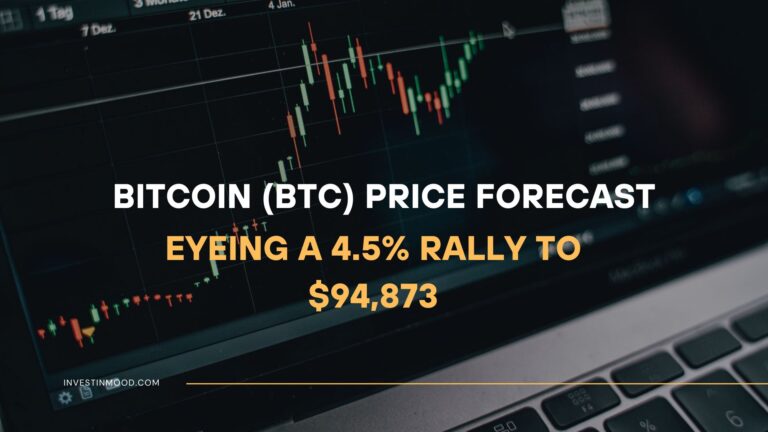
Bitcoin Dips to $117,807 Analyzing the Key Drivers Behind the Recent Pullback
Bitcoin (BTC), the leading cryptocurrency by market capitalization, experienced a slight decline of 0.65% over the past 24 hours, settling at $117,807. This drop underperformed the broader crypto market, which saw a 1.14% decrease during the same period. The dip comes after Bitcoin reached a new all-time high (ATH) of $124,457 just days prior, signaling a potential short-term correction.
Three primary factors contributed to this downward movement:
- U.S. Treasury’s Budget-Neutral Bitcoin Reserve Policy – Disappointment over the lack of direct BTC purchases by the government.
- Stronger-Than-Expected U.S. Inflation Data – Rising Producer Price Index (PPI) figures dampened expectations for Federal Reserve rate cuts.
- Technical Correction After ATH Rally – A classic bull trap triggered liquidations, exacerbating the pullback.
In this article, we’ll explore each of these factors in detail, assess their implications, and analyze what traders and investors should watch for in the coming days.
1. U.S. Strategic Reserve Policy Shift – A Bearish Catalyst
The U.S. Treasury recently confirmed that it will not engage in direct Bitcoin purchases to bolster its strategic reserves. Instead, the government plans to rely on confiscated crypto assets, a move that disappointed market participants who had anticipated fresh institutional demand from direct BTC acquisitions.
This decision was seen as fiscally conservative, contrasting with earlier speculation that the U.S. might aggressively accumulate Bitcoin as part of its long-term reserve strategy.
Market Implications
- No New Buying Pressure: The absence of direct Treasury purchases removed a potential bullish catalyst, leading to a short-term sentiment shift.
- Uncertainty Over Seized BTC: The market is now questioning whether confiscated Bitcoin will be held long-term (bullish) or gradually sold (bearish).
What to Watch For
- Clarity on Confiscation Policies: If the U.S. commits to holding seized Bitcoin indefinitely, it could reduce sell pressure.
- Potential Future Policy Shifts: Should macroeconomic conditions worsen, the Treasury might reconsider direct BTC acquisitions.
2. Macroeconomic Pressures – Inflation Fears Resurface
The latest U.S. Producer Price Index (PPI) data for July showed a 0.9% month-over-month increase, significantly exceeding the forecasted 0.2%. Year-over-year, PPI rose to 3.3%, reinforcing concerns about persistent inflation.
As a result, market expectations for a September Fed rate cut dipped slightly from 99% to 93%, strengthening the U.S. dollar (DXY) and pressuring risk assets, including Bitcoin.
Market Implications
- Stronger Dollar, Weaker BTC: A rising DXY typically correlates with Bitcoin pullbacks, as investors flock to traditional safe havens.
- Reduced Rate Cut Optimism: Higher inflation readings diminish Bitcoin’s appeal as an inflation hedge in the short term.
What to Watch For
- August 16 CPI Data: A hotter-than-expected Consumer Price Index (CPI) could extend Bitcoin’s decline, while cooler figures may revive rate-cut hopes.
- Fed Commentary: Any dovish signals from Federal Reserve officials could reignite bullish momentum.
3. Technical Correction – A Classic Bull Trap?
After reaching a new ATH of $124,457, Bitcoin faced a sharp reversal, breaking below the 23.6% Fibonacci retracement level ($121,504). This triggered over $45.8 million in BTC long liquidations, exacerbating the pullback.
Currently, the 30-day Simple Moving Average (SMA) at $117,462 serves as critical support. Meanwhile, technical indicators like the Relative Strength Index (RSI at 51) and Moving Average Convergence Divergence (MACD) bullish crossover suggest a consolidation phase rather than a full-blown downtrend.
Key Levels to Monitor
- Resistance: $121,500 (23.6% Fib level)
- Support: $117,462 (30-day SMA), followed by $114,600 (50-day EMA)
Market Implications
- Short-Term Bearish Pressure: The bull trap wiped out over-leveraged positions, leading to a temporary dip.
- Long-Term Bullish Structure Remains Intact: The overall uptrend is still valid, provided Bitcoin holds key support levels.
Conclusion: Short-Term Caution, Long-Term Optimism
Bitcoin’s recent decline stems from a mix of policy disappointment, macroeconomic uncertainty, and technical profit-taking after its ATH rally. While short-term sentiment appears cautious, several factors could limit further downside:
- Continued Institutional Demand: Bitcoin ETF inflows have risen 14% month-over-month, indicating sustained interest from major investors.
- Technical Resilience: Key support levels remain intact, and indicators suggest consolidation rather than a prolonged downturn.
Critical Questions Moving Forward
- Can Bitcoin hold $117,462 (30-day SMA) ahead of CPI data?
- Will inflation fears trigger a deeper correction, or will institutional accumulation provide a floor?
Traders should monitor macroeconomic data and Treasury policy developments closely, as these will likely dictate Bitcoin’s next major move. While short-term volatility persists, the long-term bullish case for Bitcoin remains compelling.
How did this post make you feel?
Thanks for your reaction!



